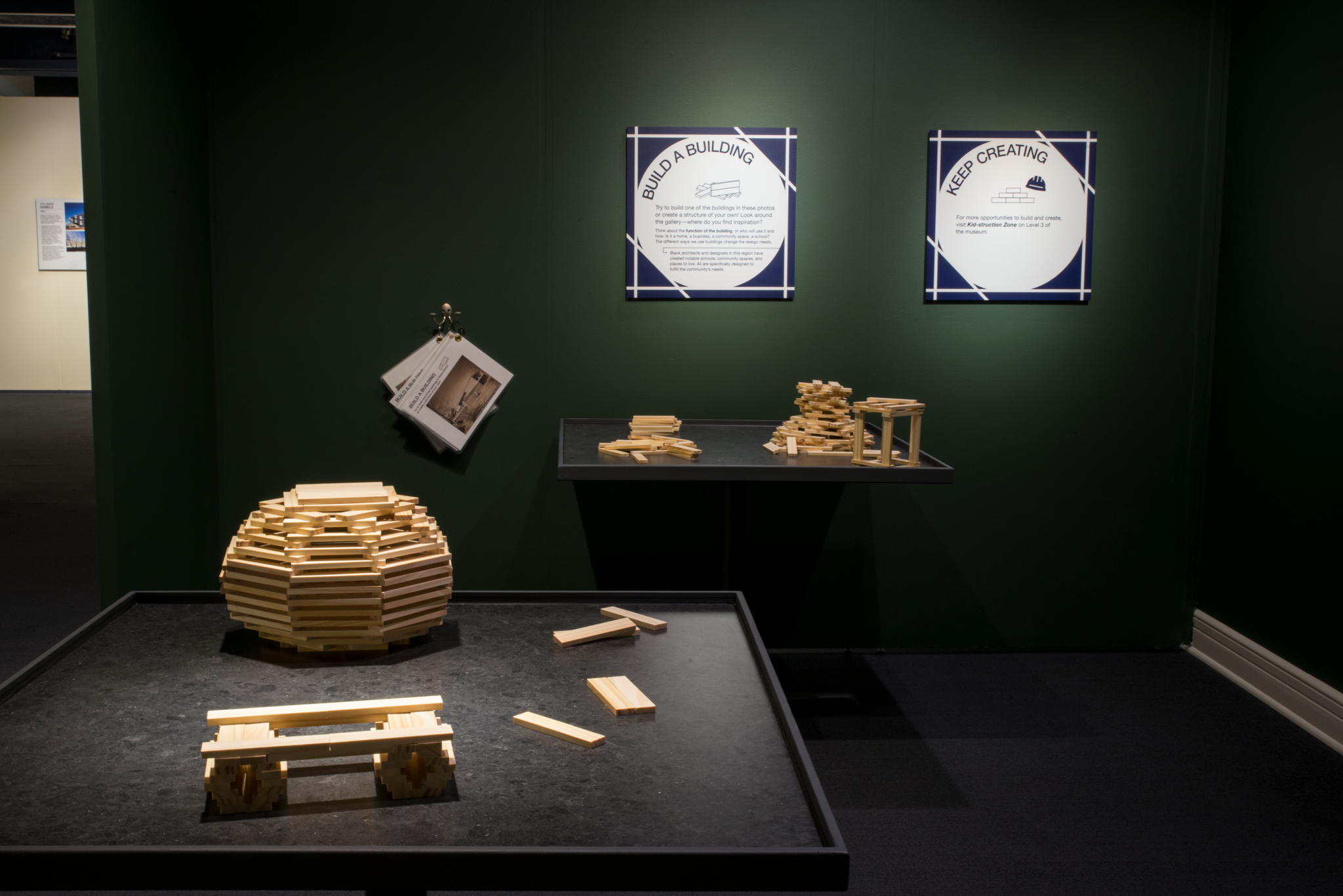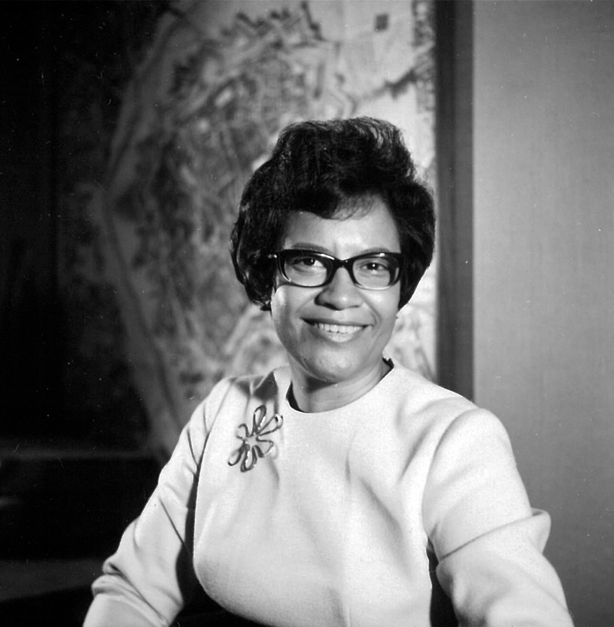Things Unseen Created by Those Unseen
Review of From the Ground Up: Black Architects and Designers at MOHAI
Written by Teen Writer Maitreyi Parakh and edited by Aamina Mughal

Let's start from the vantage point of a bug. Imagine the sheer scale of everything never before acknowledged—the foundations of the environment around, where the very roots of the buildings around you are anchored. Even in this scenario, it is tempting to focus on the central character of the bug. However, after visiting From the Ground Up: Black Architects and Designers at the Museum of History and Industry, this perspective may be shifted into one that is not typically adopted. The exhibit asks, what parts of your surroundings have you brushed past in noticing? Who was integral to the existence of these surroundings?
As David Adjaye said, "Buildings are deeply emotive structures which form our psyche. People think they're just things they maneuver through, but the make-up of a person is influenced by the nature of spaces." The exhibit itself was presented overlooking Lake Union with the information laid out in placards, which lent an integrated feel to the exhibit—seemingly a conscious choice, as a note by the window asks the viewer to consider their own surroundings more thoughtfully. The pieces were varied but characteristic of the works typically found at MOHAI, though this exhibit was a bit more information-dense than others, which made fully understanding it a longer endeavor. There were rows designating specific architects and their contributions, as well as institutes that these architects contributed to, which organized information presented in a clear, chronological order. There was also an interactive element where children could create their own buildings, and several video stations within the exhibit.

One of these videos was that of Rico Quirindongo, the Interim Director for the American Institute of Architects (AIA), highlighting the importance of recognizing the restoration of a place’s past while still considering its current context and uses. It is easy to view both history and architecture as passive forces, but both have impacts present on communities today. The historical impacts of redlining and blockbusting on Black and Brown communities are still present in the physical surroundings of an environment, which makes the contributions of Black architects especially important.
An attitude that many Black architects adopted was to fuel change through their own actions. An especially notable figure featured in this exhibit was Robert Robinson Taylor, who graduated from the first Black high school in his city of Wilmington, North Carolina. This institution was supported by the Freedmen's Bureau, which was designed to address the needs of African-American communities through housing, jobs, education, etc. He would then go on to later design numerous buildings for the Tuskegee Institute, a historically Black university founded by Booker T. Washington.
Washington himself believed in a "pulling up by the bootstraps" mentality, which is present in the views of Black architects today such as Tiara Hughes. Hughes is an AIA member and founded NOMA (National Organization of Minority Architects) as a means to integrate Black architects into the work they do for their communities. In this exhibit, she draws light to the disparity in the demographics of those in architecture—only 2.5% of American architects are Black, despite the U.S. population being 14% Black. This divide is especially harmful when considering the issues facing Black communities in the U.S. currently, much of which is dependent on the infrastructure in neighborhoods and areas.

To counter this, this exhibit centers around Black architects and designers attempting to counter the exclusivity of the field. Prospective students of color often face either barriers, such as financial restrictions that bar them from presenting their designs, or more overt macroaggressions, where they are met with attitudes suggesting they are not fit for the field. Curtis J. Moody says that Black architects have to be more than equal to prove themselves in the industry—the Michael Jordan of architecture.
Hughes and others attempt to address the ostracization of Black architects by making community involvement an integral part of the way they approach architecture. Quirindongo believes that architects have a responsibility to the land, culture, and memory of a building, which Hughes represents through her stance towards teaching. Instead of following the traditional model of students being presented with a problem and a neighborhood to design, the neighborhood is centered and students are meant to find a problem to handle themselves. Not only does this allow for more Black neighborhoods to be redesigned in more equal and prosperous ways, but creates an awareness of the communities architecture is impacting.
Hughes acknowledges the struggle of being a Black architect but lends the message: "If you feel like you're not being heard, keep speaking. If one door closes, three will open… If there is no well to drink from, dig until you create one." Though the adversities facing Black architects and the issues they attempt to address may seem demotivating, this exhibit demonstrates that small changes can ripple into a big one. Vertner Woodson Tandy attended Tuskegee Institute and benefited from the impacts of Taylor's designs. He later went on to be the first Black architect licensed by New York State and created some of the most celebrated designs in the area, allowing for Black artists and leaders of the Harlem Renaissance to gather at the estate he built.

Black architects are integral to the communities they build for, and work "...on improving the environment of people in their homes, in their places of work and their places of recreation," as Norma Merrick Sklarek said. Overall, From the Ground Up captures this idea well. Though it can be somewhat difficult to fully engage with the information given at times, your attention will eventually be drawn back to another part of the display—the information density is only a minor roadblock in fully appreciating it. The exhibit is broad in its target demographic, catering to both children and those older; visual, auditory, and tactile learners; those educated in the implications of the past and those who are completely new to the subject. From the Ground Up captures the unseen parts of the world surrounding everyone and how it shapes all of our physical and emotional states, while highlighting the contributions of those typically unseen as well. Often, things that are unseen tend to be the most fundamental to our ways of life.
From the Ground Up: Black Architects and Designers took place at MOHAI on February 4 - April 30, 2023. For more information see here.
Lead Photo: Norma Sklarek, Chuck Roberts (at right), Gruen Associates’ Los Angeles Office, 1972
The TeenTix Newsroom is a group of teen writers led by the Teen Editorial Staff. For each review, Newsroom writers work individually with a teen editor to polish their writing for publication. The Teen Editorial Staff is made up of 6 teens who curate the review portion of the TeenTix blog. More information about the Teen Editorial Staff can be found HERE.
The TeenTix Press Corps promotes critical thinking, communication, and information literacy through criticism and journalism practice for teens. For more information about the Press Corps program see HERE.


